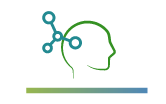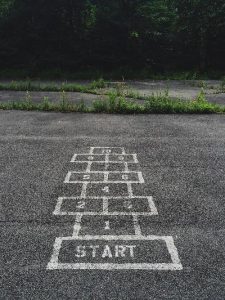You Are Here
“If you want to change your life’s direction, you need to direct your intention, which means first being honest about the thoughts, rationalizations, intentions, and attitudes you already have.” Robert Altman, The Mindfulness Code
You hear about a shoe store opening up at your local mall, and you decide that you simply must have a new pair of fabulous red shoes. Off you go to the mall but you have no idea where the shoe store is in the mall. So you start with the Mall Directory. Looking at the map, what are the two things you need to know to get you on your way to that new pair of fabulous red shoes?
- Where you are now.
- Where you want to be.
So the first thing you do is find the bold YOU ARE HERE marker on the map. Why begin at this point?
Because you need to know where you are now in order to figure out how to get to where you want to be.
Now, take a closer look at that YOU ARE HERE marker. What it doesn’t say is as important as what it does say. It doesn’t say, “You are here. . . .but you have no business buying yet another pair of fabulous red shoes.” It doesn’t say, “You are here . . . .but once you get to the store, there probably won’t be any fabulous red shoes in your size so why bother?” It’s an objective statement of fact. It’s simply an indicator of your present circumstance, that is, where you are in the mall at this very moment. No more, no less. YOU ARE HERE – it is what it is.
You’re probably thinking, so what? Of course it doesn’t say that, McDowell, it’s just a sign.
But now let’s look at how this might apply to how we think about ourselves outside the mall.
When you think about where you are right now, how often do you attach some type of subjective, usually negative, judgment to your current situation? Maybe you’ve lost your job in this crumbling economy and haven’t been able to find another one no matter how many resumes you’ve sent out or job fairs you’ve attended. When someone asks you how your job hunt is going so far, do you reply, “I haven’t found anything yet,” and just leave it at that? Or do you say, “I haven’t found anything yet . . . and I’m sure it’s because I’m not qualified, there simply isn’t anything out there, no one is hiring, I can’t afford to take such a huge pay cut.” Do you make the objective statement – “no job yet” – only to follow it up with the subjective judgment – “and at this rate, I probably won’t find a job” – which, of course, makes you feel even more depressed and desperate and (if you’re like me) worthless than you already do? And then, to make matters worse, you allow the subjective judgment to determine your next steps, and so now you stop applying for certain jobs because you “just know” that you aren’t going to get hired anyway.
I am, for the most part, a “cup half full” person. But if I had a nickel for every time I added a subjective judgment onto an objective statement about my present circumstances, I’d be living in a sumptuous beachfront house in Hawaii wearing simply fabulous red slippahs (okay, I can hear my spiritual mentors whispering, “McDowell, it isn’t the money that’s keeping you from living in Hawaii, it’s your intention,” even as I write this, but that’s another topic for another blog!). Unless I am “thought-diligent,” unless I am mindful of what I’m thinking about when I think about my life, it’s very easy for me to negatively judge my present circumstances – and, as a result, chart a course of action that will not help me realize my goals – instead of making peace with my present circumstances in order to move forward with positive intentions.
Over the last few years, there has been an explosion of information about how we can use the power of our thoughts to improve our health, attain wealth, attract love, live longer and better. These are truly powerful messages that can – literally – transform our lives.
But I think there is a necessary first step that we must take before we can fully realize the changes that we want to make in our lives by harnessing this power: To know where we want to go and figure out how to get there, we must begin with identifying where we are right now. Knowing where we are helps us identify WHAT needs to be changed and the reasons WHY we want to move away from our present circumstances towards a new life. As an empath, my work is about getting people to have the courage and energy to look at and accept themselves – their wants, feelings, needs, desires, darkest thoughts – in order to move from their current state to a desired future state.
None of us is immune from subjectivity, ignorance, or denial. But it has been my experience that if we can understand our situation from an objective, nonjudgmental standpoint, we have a better chance at finding ways of responding positively to our present circumstances. We must begin by doing what Altman describes as “cultivating a neutral and nonjudgmental awareness, which allows us to witness and observe events without attaching to them. Our subjective emotion needs to be developed into objectivity in order to determine both the need for change and our ability to change.
Perhaps we cannot remove all the ups and downs of life. However, we have it in our power to alter how we perceive our lives, how we interpret YOU ARE HERE, in order to change our perception of the experience of our lives – which ultimately influences our decisions and our actions. This is in no way to imply that your present circumstances might not be daunting, painful, or even life-threatening. Rather, identifying what our lives consist of now, and making peace with our present circumstances, means that we are more readily able to accept and engage the difficulties of life. Once we objectively acknowledge our present circumstances, we can determine where we need to be, and then begin to chart a course of action for getting there.
“If you truly want to change your life, you must first be willing to change your mind.” The Mindfulness Code, Donald Altman

 So I’m talking to one of the members of my Practitioners Circle when the discussion moved to working with animal totems. She is fairly new to the craft, having just begun to explore where her metaphysical abilities and interests might lie. And, as with all of us just starting out, she’s been using the internet to “enhance” her exploration. Not surprisingly, she’s quickly become overwhelmed with the staggering volume of information – books, webinars, classes, seminars, newsletters, workshops, blogs – that is available to her, all of which is fascinating and compelling but also – well – overwhelming.
So I’m talking to one of the members of my Practitioners Circle when the discussion moved to working with animal totems. She is fairly new to the craft, having just begun to explore where her metaphysical abilities and interests might lie. And, as with all of us just starting out, she’s been using the internet to “enhance” her exploration. Not surprisingly, she’s quickly become overwhelmed with the staggering volume of information – books, webinars, classes, seminars, newsletters, workshops, blogs – that is available to her, all of which is fascinating and compelling but also – well – overwhelming.